The Role of Color Theory in Capturing Bridal Shoot-outs Photography
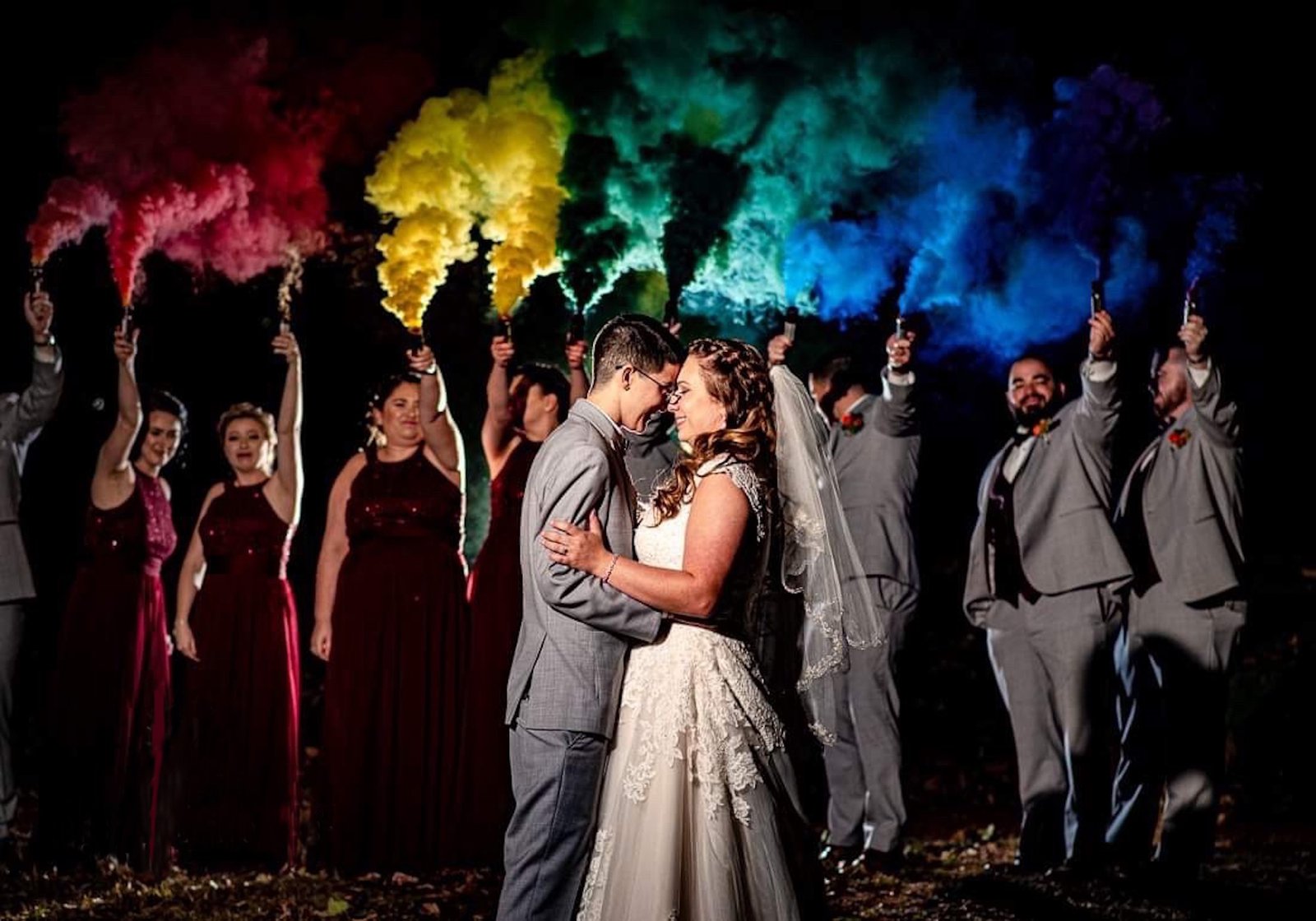
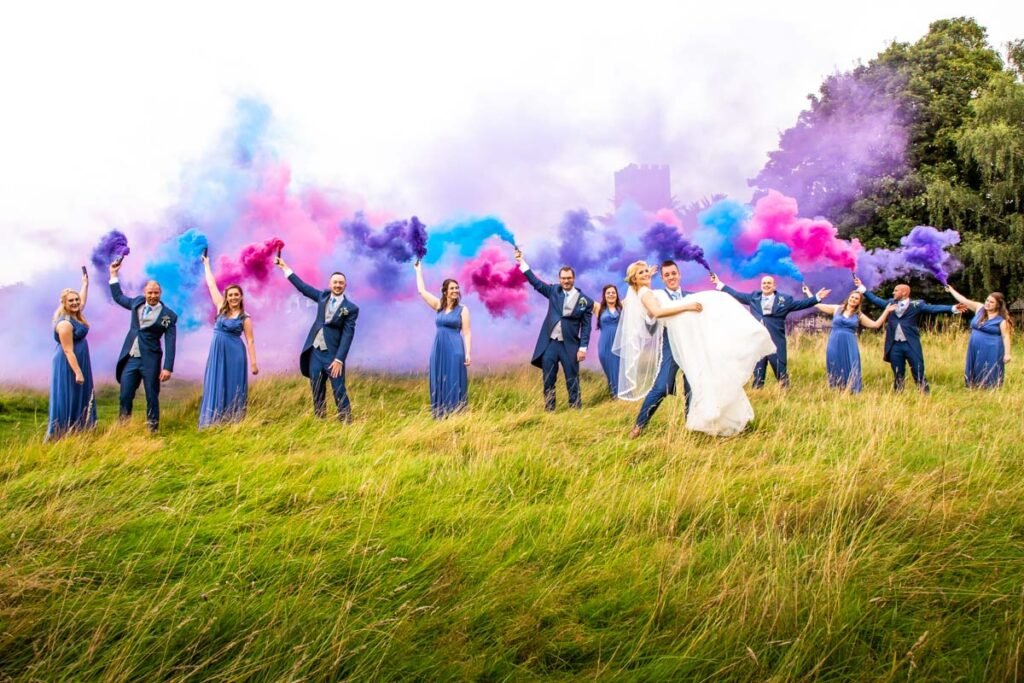
A bridal shoot is one of the memorable incidents in the life of every couple, through which they portray love and joys, leaving reminiscence regarding the most precious day of life—that is, a wedding day. Behind every brightly smiling, emotive face, and duly dressed person lies, in the realms of bridal photography, an mostly ignorant factor that determines the outcome color theory, in short. The color scheme used for bridal photography would always enhance the outcomes of positive perceptions of beauty regarding those pictures and convert these into telling a certain visual narration.
Color theory is essentially about the interaction of colors and their production of certain effects on the observers. When it comes to bridal photography, it doesn’t stop at simply choosing a bouquet of flowers that matches or complements the color of the bride’s gown. It means understanding the interaction of several colors and how they can be used to create specific feelings, draw attention to certain aspects of the photograph, and balance an aesthetically pleasing composition. This article shall explore the importance of color theory within a wedding photo shoot, debate the effect of color choices on the final images, and how such theory can act as a starting point for stunning, unforgettable photographs by photographers and brides alike.
Probably one of the biggest reasons color theory plays such an important role in bridal photoshoots is the actual emotional impact that color can have on the viewer. Colors have traditionally been associated with specific feelings and moods, which a photographer could exploit to provoke certain feelings in the final image.
For instance, white color conventionally denotes purity and innocence and is traditionally used in bridal gowns; therefore, it carries significant emotional weight in a wedding context. That is, the white color symbolizes a new beginning in life for a bride and transit into married life. The photographer can further press this theme of purity and freshness by balancing white with other colors in the shot, like soft pastels in the background or flowers.
On the other hand, colors like pure red or valuable burgundy denote passion, vigor, and therefore love. Applying these colors thoughtfully in a couple’s wedding-bridal pictorial, taking into consideration a classic red rose arrangement or a similarly colored lipstick makeup on the bride for the photo event, will highlight the depth-of-emotion facet of the event. It is so for other colors, too, like blue, which is commonly applied to symbolize trust, loyalty, and calmness, or gold for the representation of wealth, warmth, and richness. A photographer knows how to make these colors come in to create a desired emotional response in the viewer.
A bridal gown is always the main subject of a bridal shoot; therefore, making sure the colors of the background, accessories, and everything else complement the dress is important. The shades of most bridal gowns range from pure white to off-white, ivory, champagne, and even blush. Colors around the bride should enhance and not overpower her attire. Using complementary colors can make the gown pop in the image. For example, using a soft ivory gown against a richly blue or green backdrop creates a high contrast that makes the bride’s dress appear even brighter and radiant. Alternatively, colors like gold, bronze, or soft peach will provide a warmer, more harmonious effect and make sure the bride’s gown flows into the rest of the photo.
While the gown often takes center stage in the bride’s color scheme, other elements can also be coordinated by using color theory: her bouquet, jewelry, shoes, and even the makeup. For instance, a nosegay of white lilies could work well with a soft pink wedding dress, while a bright red bouquet is likely to fit in with a traditional white gown. Knowledge of the psychology of color can help the stylist and the photographer ensure these items and many others will come together into one cohesive and visually attractive image.
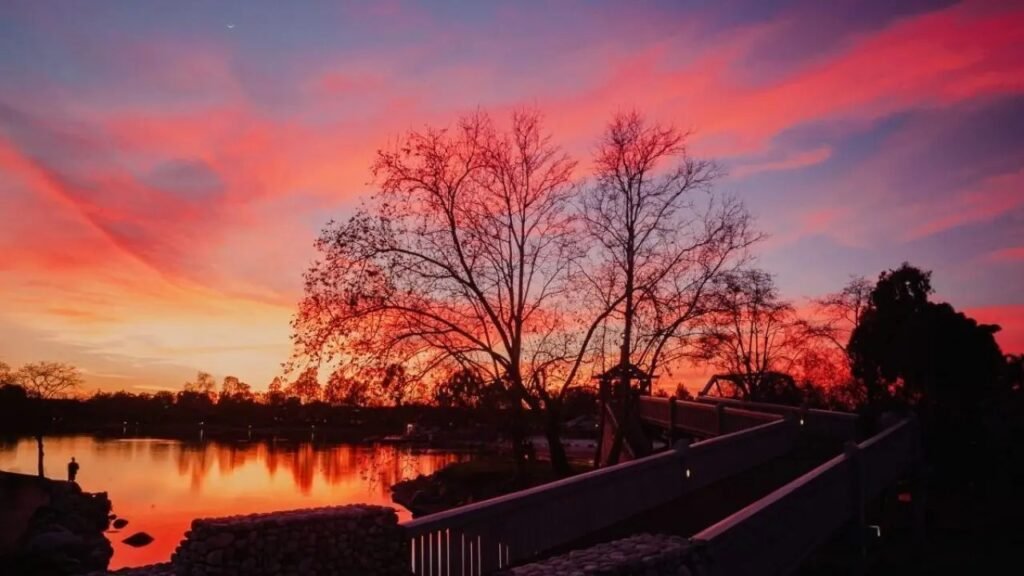
Color theory is another important aspect involved in guiding the viewer’s attention within a photograph. A photographer can use contrast to highlight aspects of the shot that he or she would want the viewer’s eye to go to to the bride, the groom, or other key components of the scene.
If, for instance, cool tones prevail in the background like blues and greens a warm-toned dress or bouquet will make it pop, instantly drawing all the attention to the bride.
If the picture has a group, then the bride can wear any other color than the others to make her the focal point of the frame. This can also be applied for portrait or any photo that the photographer wants the viewer’s concentration to remain entirely on the bride and groom.
On the other hand, analogous colors are those that sit next to each other on the color wheel and can be used in creating harmony within the composition. These colors naturally blend together and often provide a more relaxed, peaceful effect. For example, shades of pink, peach, and light purple can be used in flowers, the backdrop, and attire to create a serene and romantic atmosphere. Balance and the intentional use of contrast and harmony enable the photographer to direct the viewer’s gaze, leading the latter through dynamic, visually interesting compositions.
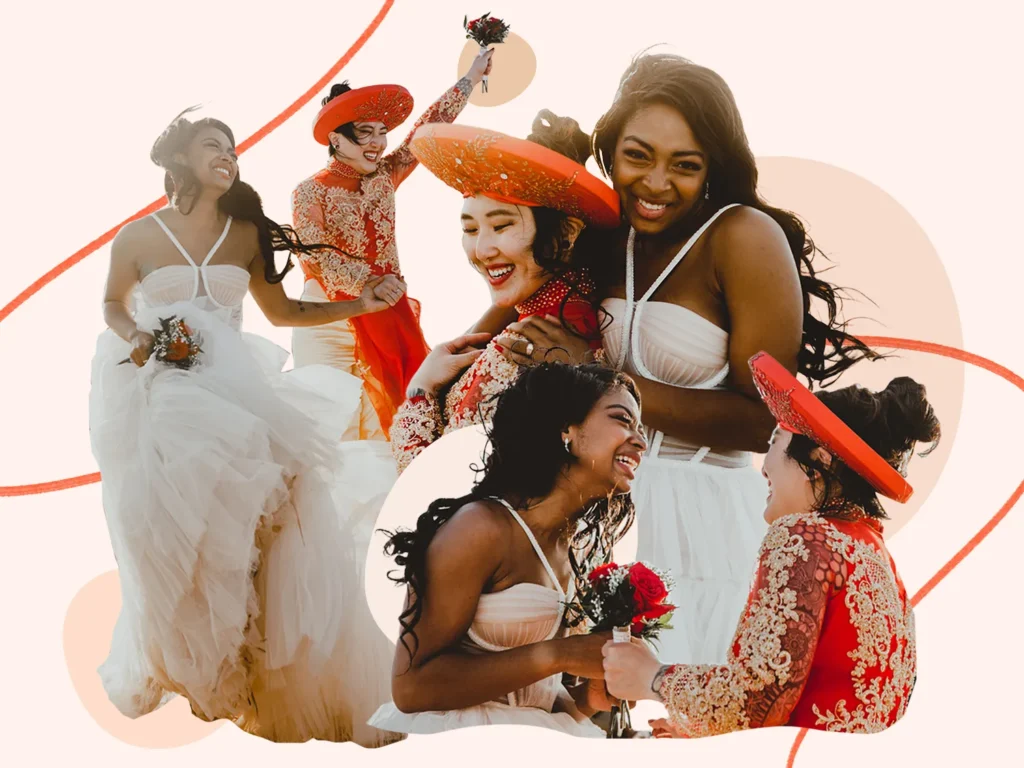
Not only the psychological effect, but color choices may also have cultural and symbolic meanings, adding layers of depth to the bridal photoshoot. Different cultures associate colors differently, and these meanings can affect how the images are perceived.
For example, white is the traditional color of weddings in most Western cultures and is often thought of as a symbol of purity and new life. In some Asian cultures, however, red is the traditional color of weddings, symbolizing good luck, prosperity, and joy. A bride wearing a red dress in an Asian wedding photo shoot would connote a different set of emotions and symbolism than one wearing white in a Western setting.
The same way any photographer working with diverse clients must know something about cultural color meanings. Whenever a wedding shoot is planned and performed using significant colors of any particular culture, the entire wedding picture set will carry along the bride and groom’s heritage into the message depicted in each of them.
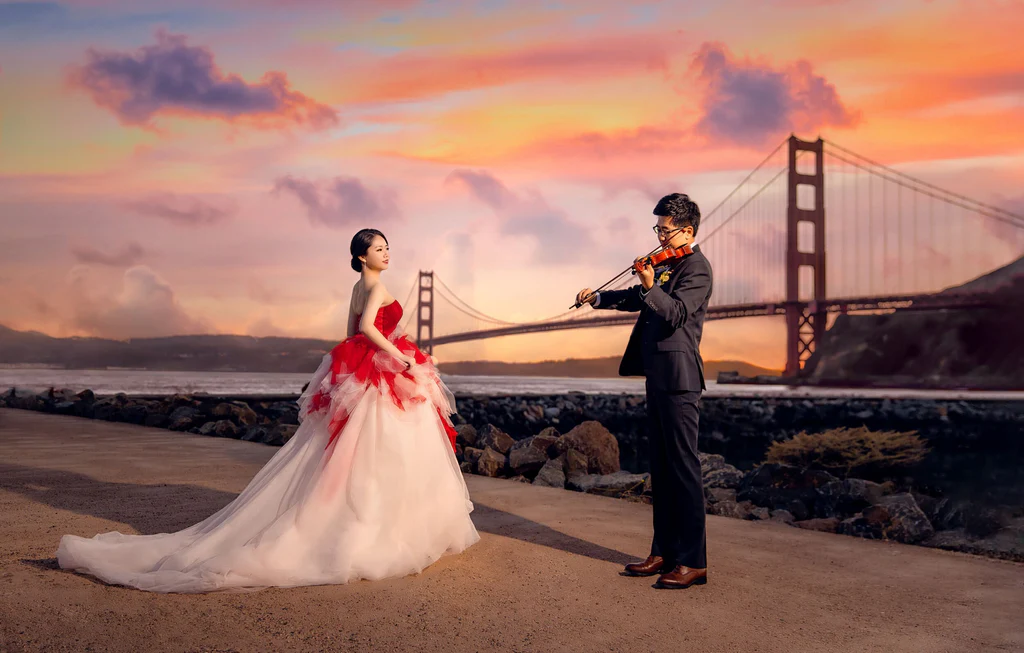
The general mood of the shoot dictates the atmosphere color helps set that atmosphere: be it romantic, whimsical, dramatic, or classic. Earthy tones such as browns, oranges, and yellows are most fitting for a rustic wedding to have a cozy intimate feel. In contrast, the color palette best for a beach wedding photo shoot is all soft blues, greens, and whites, which really helps bring in those serene ocean breezes.
To add a bit more drama, deeper hues of purple and black with spots of red carry elegance and refinement. This will be visible, of course, not only in a bride’s robe but in other elements too accessories, texture, or perhaps background. After all, one of the significant photographer’s traits is to opt for colors corresponding with the photoshoot’s specific tone to expressively express oneself.
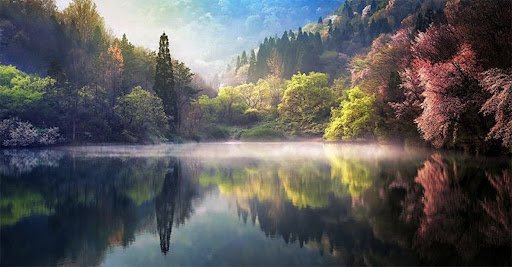
Lighting is very crucial in the appearance of colors within a photograph. Colors can change considerably with different light sources, and understanding the interaction between light and color is one of the more important areas of color theory in photography. For example, outdoor light diffuses the pastel tones of a bride’s dress and flowers to make it look even softer and dreamy. Artificial, on the other hand especially the use of warmer light bulbs offers richness to the colors and enhances depth to present more dramatic or bold images; conversely, if using cooler lights, then an ethereal feel to a photograph becomes far more contemporary. Photographers have to be sensitive to how light interacts with color to achieve the desired effect in the final photographs. The interaction of light and color will also determine how well colors harmonize or contrast with each other, which influences the mood of the photoshoot.
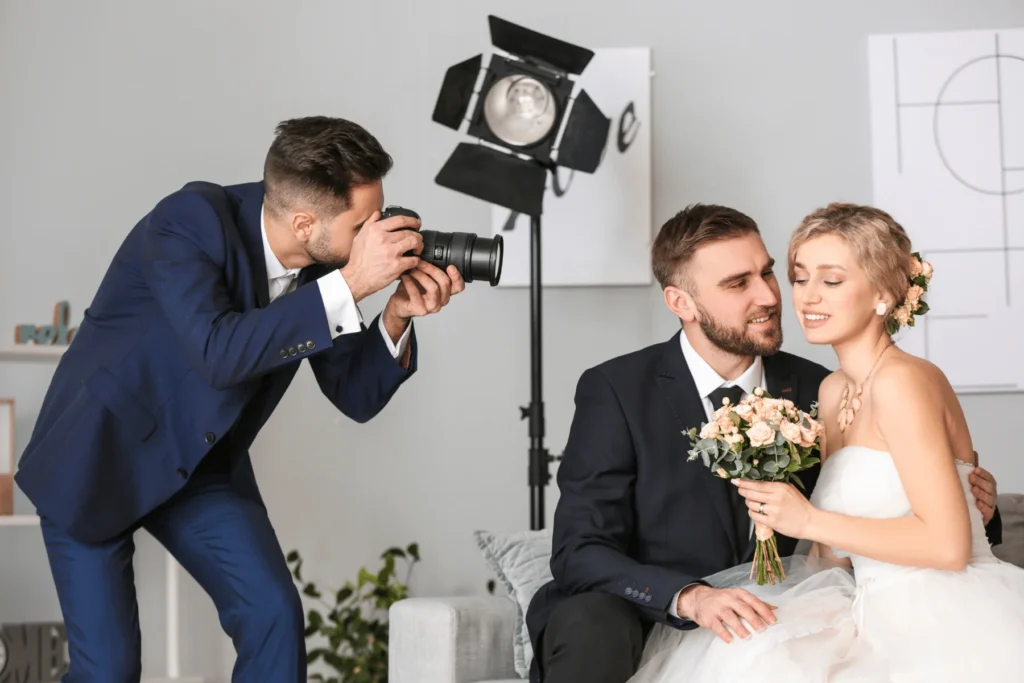
Following are a few basic rules which the bride and the photographer need to remember in order to take full advantage of color theory for the bride in a wedding photoshoot.
Color theory can be an essential tool in bridal shoots to elevate the beauty of the images, convey powerful emotions, and create a cohesive visual story. Understanding how colors work together, their emotional significance, and their cultural meanings will help photographers and brides create stunning, memorable photos. Color used thoughtfully and with deliberation can make a photoshoot an art form that captures not just the appearance of the day but the feeling, spirit, and love that surrounds it. Whether through the vibrancy of flowers popping against a neutral gown or the soft pastel tones in harmony, color plays an indispensable role in capturing the magic of a wedding.

